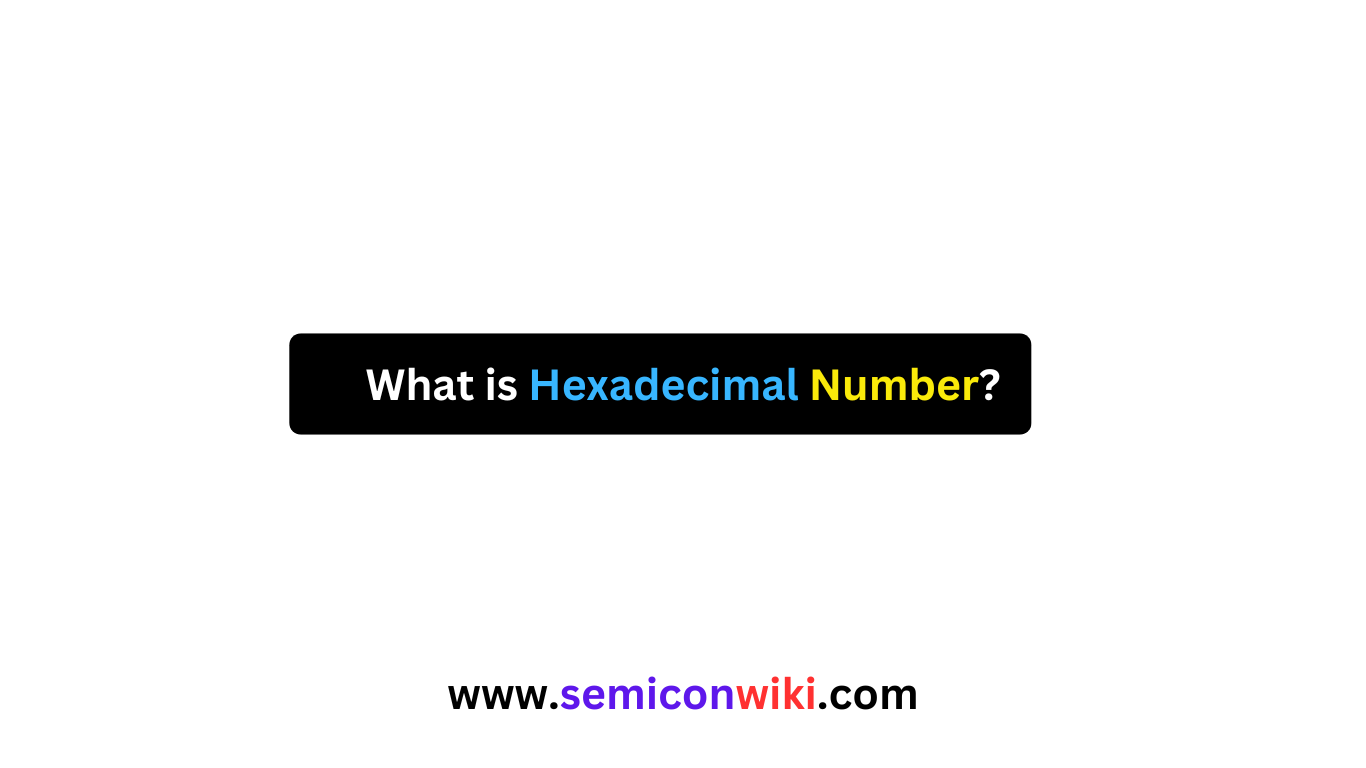Understanding Hexadecimal Number System
Hexadecimal is a base-16 counting system where each digit represents sixteen different numbers, using the numbers 0-9 for the first ten digits and the letters A-F for the next six digits. While not a historical counting system, it emerged in the electronic age as a user-friendly expansion of the binary system.

Ease of Use of Hexadecimal Number
Computers primarily operate using a base-2 binary counting system, which can be cumbersome for human interaction. Hexadecimal provides a more efficient way to interpret binary values, as sixteen is two to the fourth power, allowing a single digit to represent four binary digits. This contrasts with the base-10 system we commonly use, which doesn’t evenly match binary digits in a consistent multiple.
Hexadecimal Number System Table
If you’re trying to understand how hexadecimal numbers work, this table will definitely help. So, let’s look at how decimal numbers relate to both binary and hexadecimal values. In this system, each hexadecimal digit matches a 4-bit binary number.
| Decimal | 4-bit Binary | Hexadecimal |
|---|---|---|
| 0 | 0000 | 0 |
| 1 | 0001 | 1 |
| 2 | 0010 | 2 |
| 3 | 0011 | 3 |
| 4 | 0100 | 4 |
| 5 | 0101 | 5 |
| 6 | 0110 | 6 |
| 7 | 0111 | 7 |
| 8 | 1000 | 8 |
| 9 | 1001 | 9 |
| 10 | 1010 | A |
| 11 | 1011 | B |
| 12 | 1100 | C |
| 13 | 1101 | D |
| 14 | 1110 | E |
| 15 | 1111 | F |
You can use this table whenever you need a quick conversion between decimal, binary, and hexadecimal systems.
Applications of Hexadecimal Number
Despite larger base systems like base-32 and base-64 existing in computing, hexadecimal remains the most prevalent due to its ease of use. While base-32 and base-64 have applications, they are seldom utilized outside of deep coding contexts. Even non-programmers often find themselves using hexadecimal regularly, especially in areas like graphic design where color representation relies on hexadecimal codes.
Use in Graphic Design
For instance, graphic designers often use hexadecimal codes to represent colors, as the RGB color codes on computers consist of three values from 0 to 256, with each value representing one for red, green, and blue. Since 256 is 16 to the second power, it can be expressed with two digits. Therefore, the color cobalt green, with an RGB value of 61,145,64, can be represented simply as the hexadecimal value #3D9140.
Counting and Patterns
Counting in hexadecimal follows a straightforward pattern, though it may seem complex initially. Counting to fifty, for example, includes numbers like 1, 2, 3, …, A, B, …, 1A, 1B, …, 24, 25, …, 2F, 30, 31, …, 32 (which represents 50 in hexadecimal). This system exhibits interesting simplicities when working with powers of two, where numbers like 24, 25, 26, etc., are represented as 10, 20, 40, 80, 100, 200, and so on, mirroring binary patterns.
FAq
What is hexadecimal and why is it used in computing?
Hexadecimal is a base-16 counting system where each digit represents sixteen different numbers, combining numbers 0-9 and letters A-F. It originated in the electronic age as a user-friendly expansion of the binary system, commonly used in computers. Computers primarily operate in binary (base-2), but hexadecimal provides a more human-friendly way to interact with binary values. For instance, a single hex digit can represent four binary digits, making it easier to convert between binary and hexadecimal.
How is hexadecimal used in graphic design?
Hexadecimal is widely used in graphic design to represent colors. In most computers, colors are represented using RGB (red-green-blue) values, where each color channel ranges from 0 to 255. Since 256 is 16 squared, it can be represented with two hex digits.
Read also: What is Vacuum tube?